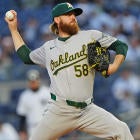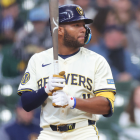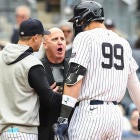After weeks of negotiations with the MLB Players' Association, Major League Baseball and commissioner Rob Manfred announced a series of pace-of-play rule changes Monday. There will be no pitch clock in 2018, but there will be a limit on mound visits.
Here is Manfred's statement:
"I am pleased that we were able to reach an understanding with the Players Association to take concrete steps to address pace of play with the cooperation of players. My strong preference is to continue to have ongoing dialogue with players on this topic to find mutually acceptable solutions."
The MLBPA was reportedly not cooperative during pace-of-play negotiations in recent weeks because they players are upset about the slow free agent market. Ultimately, the union did come to an agreement with MLB, and they signed off on the rule changes.
MLBPA chief Tony Clark issued the following statement Monday:
"Players were involved in the pace-of-game discussion from Day One, and are committed to playing a crisp and exciting brand of baseball for the fans, but they remain concerned about rule changes that could alter the outcome of games and the fabric of the game itself."
Manfred could have unilaterally implemented rule changes this year, though per the collective bargaining agreement, he could only implement last year's rule change proposal. Last year's proposal included a 20-second pitch clock. Obviously, that was not put into place this year.
Here is everything you need to know about baseball's new pace-of-play rules.
Teams get six mound visits per game
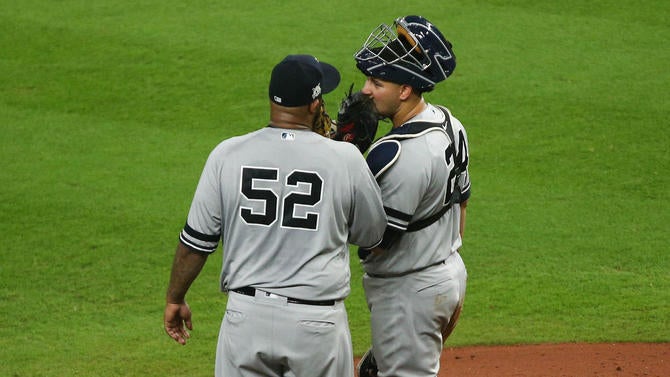
In an effort to cut down on downtime within games, each team will now be limited to six mounds visits per game, plus one additional mound visit for every extra-inning played. Here is the league's official description of a mound visit:
A manager or coach trip to the mound to meet with the pitcher shall constitute a visit. A player leaving his position to confer with the pitcher, including a pitcher leaving the mound to confer with another player, shall also constitute a mound visit, regardless of where the visit occurs or the length of the visit.
That means going forward, a mound visit will include visits by coaches and managers, as well as visits by other players. If the catcher goes to the mound, it counts as a visit. If an infielder goes to the mound, it counts as a visit. Also, the second mound visit of an inning requires a pitching change. That remains the same.
There are mound visit exemptions
There are, of course, exemptions to the mound visit rule. The following does not count against each team's mount visit total:
- A pitcher-catcher conference between batters.
- An infielder goes to the mound to clean his spikes during rainy conditions.
- Any visit involving a potential injury.
- Any visit after a pinch-hitter is announced.
Also, if a team has exhausted their six mound visits, the umpire has the discretion to allow the catcher to visit the pitcher following a cross-up. The MLBPA had concerns about potential injuries resulting from the battery getting their signs mixed up.
Commercial breaks will be shorter
Yes, MLB agreed to shorten commercial breaks during the regular season. Can't say I saw that coming. Here are the new between inning commercial break times:
- Regular season games: 2:05 (previously 2:25)
- Nationally televised games: 2:25 (previously (2:45)
- Postseason games: 2:55
As part of the shortened commercial breaks, pitchers can throw as many warm-up pitches as they want before the timer runs out, though they are no longer guaranteed eight warm-up pitches. Here are the actions required within the time limits:
- 25 seconds remaining: Umpires directs pitcher to complete final warm-up pitch.
- 20 seconds remaining: Batter is announced and must leave on-deck circle.
- 0 seconds remaining: Pitcher must begin to deliver a pitch to the batter.
The umpire can award the pitcher additional warm-up pitches under special circumstances, such as potential injury, the grounds crew tending to the field, or other on-field delays.
Start of the timer for breaks
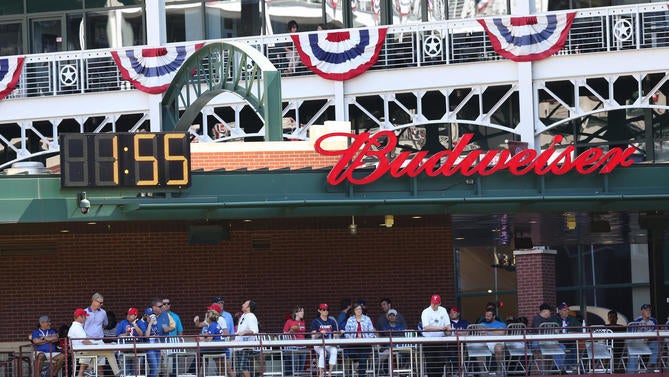
MLB provides specific guidelines for starting the commercial break timer. They are as follows:
- Between innings: Timer begins immediately after the final out is recorded.
- During pitching change: Timer begins when the reliever leaves the bullpen and crosses the warning track (or foul line in the case of on-field bullpens)
So, during a regular season game, the reliever has two minutes and five seconds from when he leaves the bullpen to get the mound, throw his warm-ups, and prepare to throw the first pitch to the batter.
Enforcement of time limits
There will be no automatic ball/strike penalties for timer violations. There had been talk of charging the pitcher with an automatic ball if he wasn't ready to deliver the pitch when the timer runs out, and charging the batter with an automatic strike if he wasn't in the box when the timer runs out. Here are the enforcement rules:
Umpires shall direct players and enforce the inning break and pitching change time limits on the field. Players who consistently or flagrantly violate the time limits will be subject to progressive discipline for just cause by the Office of the Commissioner pursuant to Article XI(C) of the Basic Agreement.
From the sound of things, players will be hit with fines for violating the timer. Repeat offenders will be hit with larger and larger fines.
The pitch clock isn't gone forever
A pitch clock will not be implemented as part of this year's pace-of-play rule changes, but don't expect it to go away forever. MLB and Manfred have been pushing hard for a pitch clock and that's not going to stop. They've merely tabled talks for this year.
Keep in mind that a 20-second pitch clock has been used at Double-A and Triple-A for three seasons now. An increasing number of big league pitchers pitched with a pitch clock in the minors, so it won't require a major adjustment. The MLBPA won this battle. There won't be a pitch clock in 2018. Expect MLB and Manfred to revisit the topic after the season.














